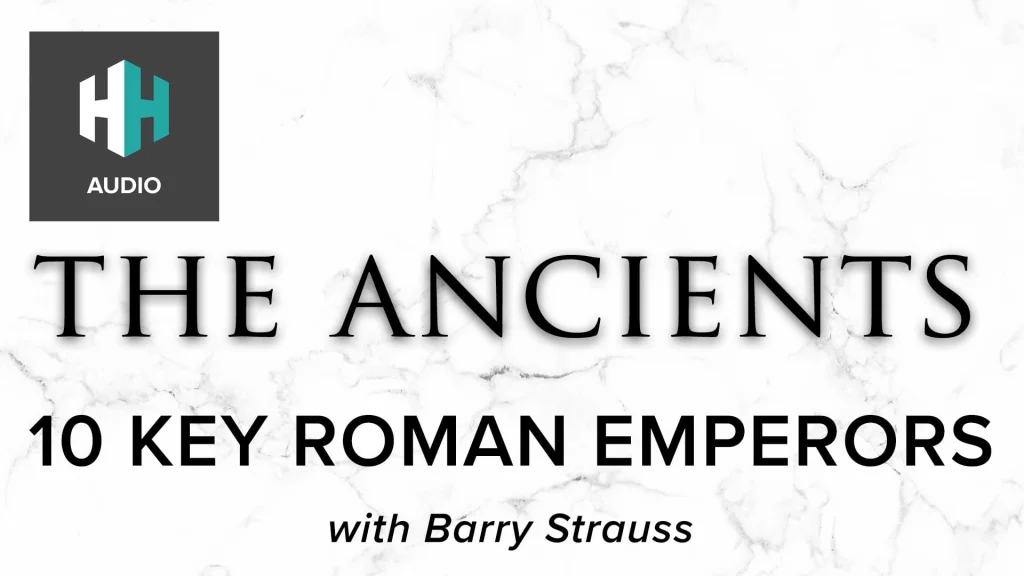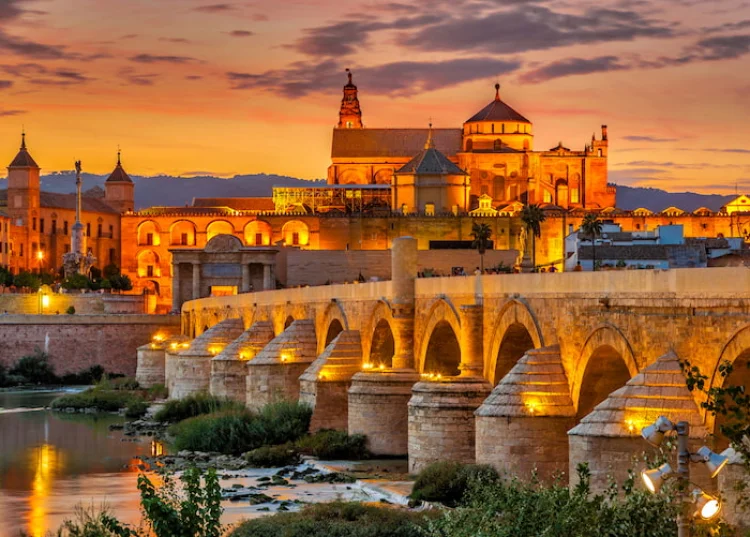Conquering Europe, the Romans landed in Spain in the 2nd century BC, establishing the Iberian provinces known then as ‘Hispania’. As the locals were Romanised and leaders were granted the privileges of Roman upper classes, Spanish cities were expanded and improved, leaving a host of top Roman ruins, landmarks and monuments to visit today.
Among the very best featured here include the magnificent Baelo Claudia, Segovia Aqueduct and the Merida Roman Theatre. If you’re unsure where to start, check out History Hit’s guide to the top 10 sensational ancient Roman sites to visit in Spain.

1. Baelo Claudia
The Roman city of Baelo Claudia in Andalusia is one of the best surviving examples of an ancient Roman town in Spain. Sitting directly on the coast, Baelo Claudia is an enjoyable site to visit with both stunning views and ancient ruins.
Although founded in the 2nd century BC, Baelo Claudia grew into a small yet important Roman trading post in the 1st century BC and 1st century AD, particularly under the rules of Emperor Augustus and Claudius.
The remains of Baelo Claudia, near the modern town of Tarifa, have been restored and preserved because of the good general conservation of the ruins, their easy interpretation and the beauty of their surroundings.

2. Segovia Aqueduct
Segovia Aqueduct in Spain is an amazingly preserved Roman structure representing a brilliant feat of engineering. Built at around the turn of the 1st century AD, the Segovia Aqueduct still stands tall and includes 2 levels of granite arches to a total length of 800 metres.
Despite suffering damage under the Moorish occupation, this stunning site now weaves through Segovia, looming over the urban sprawl at a maximum height of almost 30 metres. Segovia Aqueduct is also part of the UNESCO World Heritage site of the Old Town of Segovia and its Aqueduct.

3. Merida Roman Theatre
The Merida Roman Theatre or “Teatro Romano” is one of the most impressive of the ruins of this former colony of the Roman Empire.
Constructed in approximately 15-16 BC, the Merida Roman Theatre would have been one of many public buildings erected in the area. At the time, Merida was known as Emerita Augusta and was the capital of Roman Lusitania.
Today, beside being Merida’s most visited monument, the Roman Theatre is home to the development of the Festival de Merida – the oldest classical theatre festival celebrated in Spain. The semi-circular walls are intact and the back wall of the stage or scenae frons with its double-tiered columns has been beautifully restored.

4. Empuries
The site of Empuries in Catalonia contains the remains of an ancient Greco-Roman city and military camp and is one of the oldest of its kind found on the Iberian Peninsula. The history of Empuries dates back to the early Iron Age, but the remains that can be seen today at the Empuries archaeological site are those of both a Greek trading port and a Roman military camp.
In 218 BC the Romans took control of Empuries in an attempt to block Carthaginian troops during the Second Punic War. By 195 BC a Roman military camp had been established and over the next century a Roman colony named Emporiae emerged at the site, lasting until the end of the 3rd century AD.


5. Lugo Roman Walls
The Lugo Roman Walls have been described by UNESCO as ‘the finest surviving example of late Roman military fortifications’. Stretching over 2 kilometres around the historic centre of Lugo in Galicia, Spain, the fortifications have been on the UNESCO World Heritage List since 2000 and are a popular tourist attraction.
Although the Lugo Roman Walls were built at a time when foreign invasion was a threat to all Roman Hispania, it is believed that they were actually intended to defend the city from internal threats, particularly from revolts of local tribespeople. In the end, it wasn’t disgruntled locals who breached the Lugo Roman Walls but the Germanic Suevi tribe in the 5th century.

6. Cordoba Roman Bridge
Built by the Romans in the 1st century BC, the Roman Bridge of Cordoba, Spain, as described in around 1140 by Arab geographer Muhammad al-Idrisi, ‘surpasses all other bridges in beauty and solidity’.
Rather than simply an object of beauty which it undoubtedly is, the bridge was a vital player in the city of Cordoba’s battles with, amongst others, the ominously-named Peter the Cruel in the 1350s.
Today, while only the 14th and 15th arches from the northern end are original the Roman Bridge continues to form an unmissable part of Cordoba’s ancient centre – particularly at dusk when the sun lingers on the golden red stone and highlights the arches.

7. Tarragona Aqueduct
The stunning Tarragona Aqueduct is the last remaining section of the ancient aqueduct which served the Roman city of Tarraco.
Also known as Pont de les Ferreres or Pont del Diable, it is believed to have been built in the first century AD during the reign of the Emperor Augustus. The original Roman aqueduct ran for over 25 kilometres and took water from the river Francoli all the way to the city of Tarraco.
As an interesting side-fact, the Pont de les Ferreres is also widely known as the or Pont del Diable – meaning the Devil’s Bridge because of a local legend which says it was constructed by the Devil after winning a bet in which a fair lady bet her soul. Dark stuff…

8. Merida Roman Circus
The Merida Roman Circus or ‘Circo Romano de Merida’ was built when the city in Spain, then known as Augusta Emerita, was part of one of the colonies of the Roman Empire.
A vast sports arena measuring over 400 metres long and 30 metres wide, able to accommodate up to 30,000 people, Merida’s Roman Circus would have been the site of chariot races and even naval games, considered to be one of the largest of its kind.
Walking up to the observation platform and looking out across the circus, it is easy to imagine chariots furiously racing across the length of the track.

9. Tarragona Amphitheatre
Tarragona Amphitheatre (Anfiteatro Romano de Tarragona) is a 2nd century AD sports arena in Spain which would once have played host to the bloody pastimes of the Ancient Romans, particularly gladiatorial battles.
Tarragona Amphitheatre was in use until the 4th century AD, after which it was abandoned. Later, a 6th century basilica and a 12th century gothic church were built on the site, the remains of which can be seen today.
In summer, Tarragona’s Roman heritage comes alive through a series of historical reconstructions that show how the inhabitants of Tarraco once lived.

10. Carranque Archaeological Park
Carranque Archaeological Park (Parque Arqueologico de Carranque) contains a series of Ancient Roman ruins built in the 4th century AD believed to have a connection with Emperor Theodosius I the Great.
The buildings date from the 4th century and, having been buried for centuries, were re-discovered by a local farmer in 1983 when he was ploughing a field and saw a flash of mosaic.
Carranque Archaeological Park is mainly comprised of a well preserved villa – known as the Materno Villa – a nymphaeum (temple) and a basilica, as well as a small ancient burial ground.

